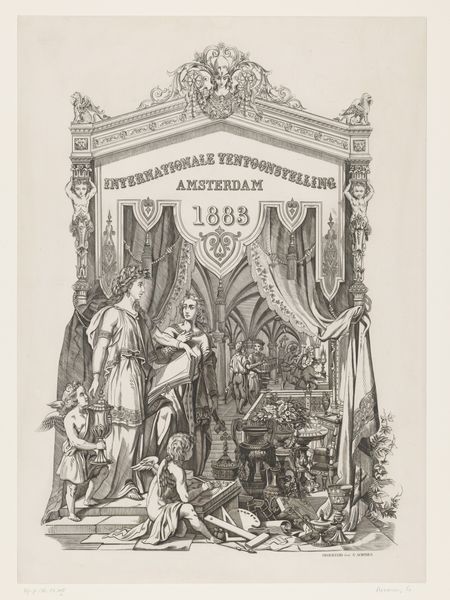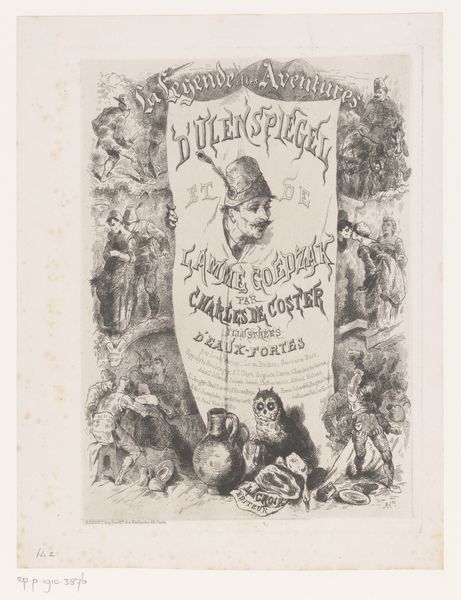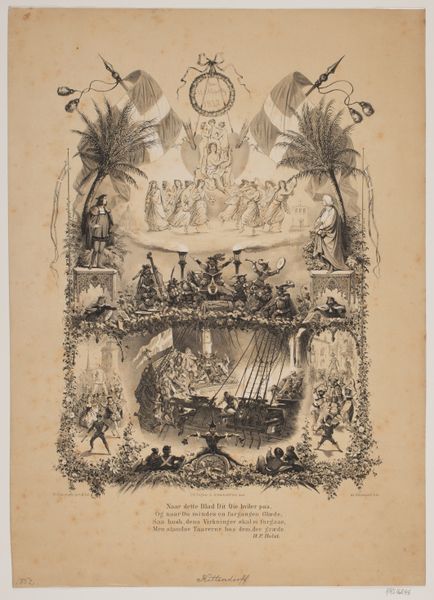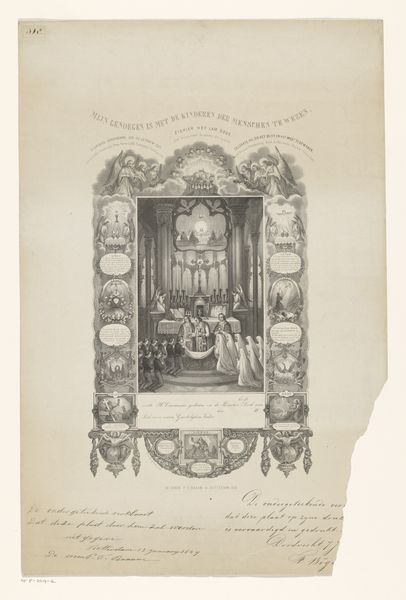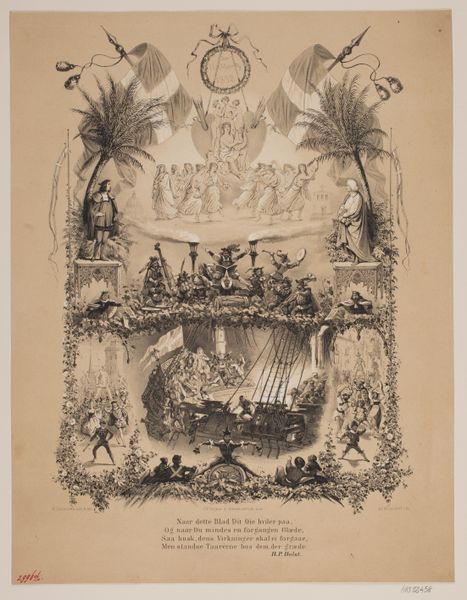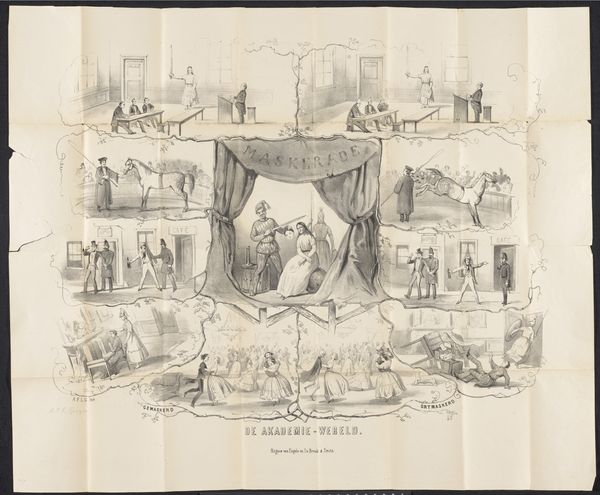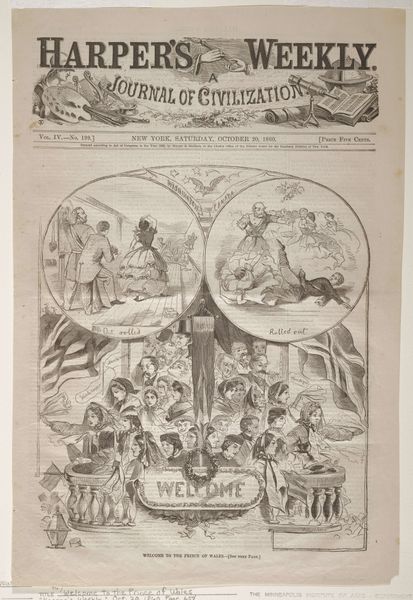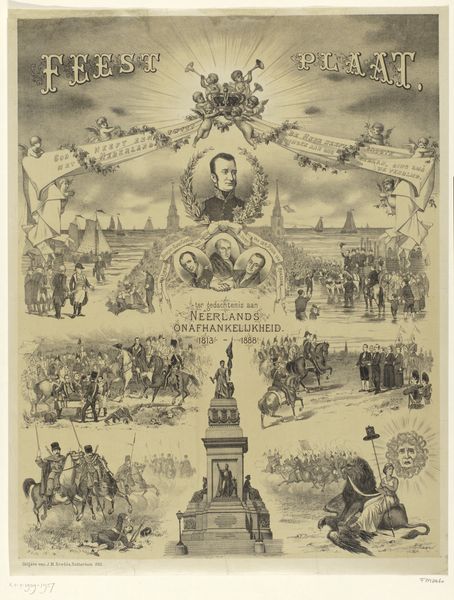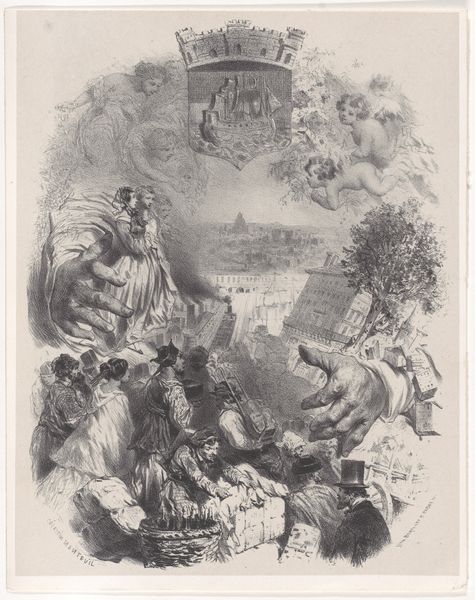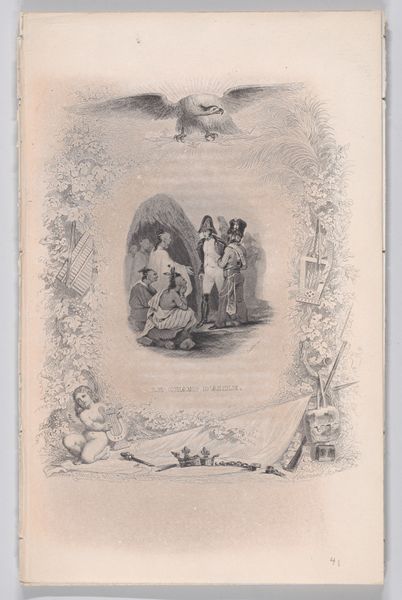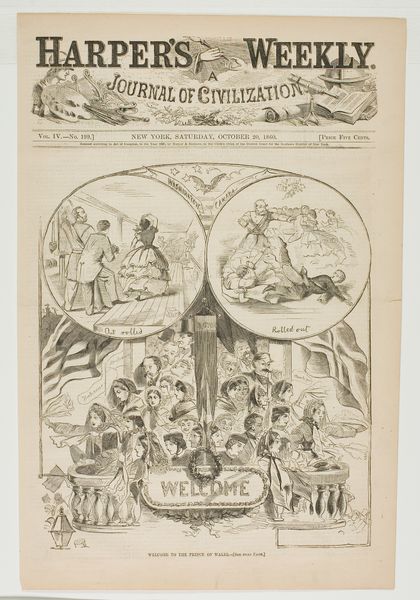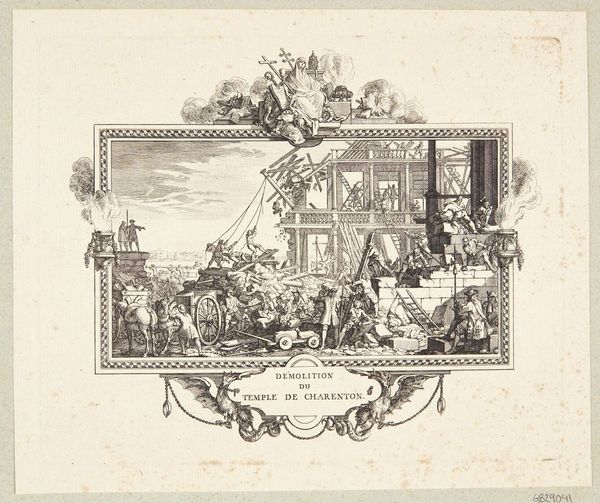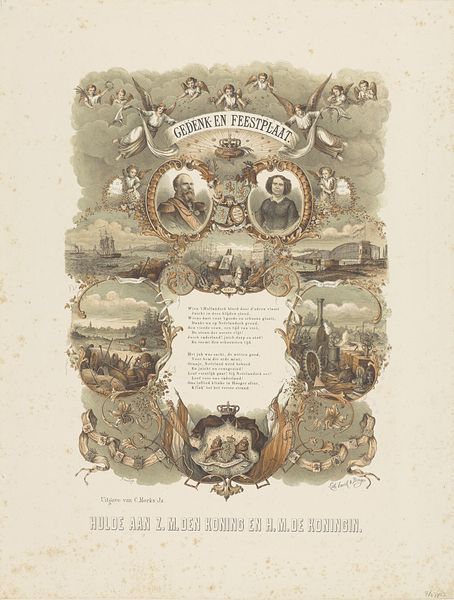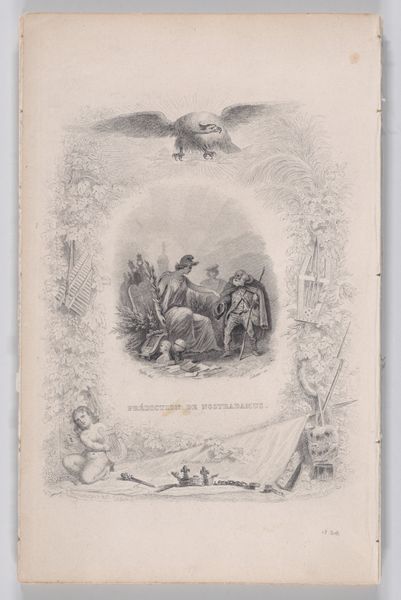
print, engraving
#
narrative-art
# print
#
genre-painting
#
engraving
Dimensions: height 221 mm, width 131 mm
Copyright: Rijks Museum: Open Domain
Curator: This engraving by Emrik & Binger, dating back to 1869, is titled "Vrouwen rondom tafel en zes scènes uit dagelijks leven," which translates to "Women around a table and six scenes from daily life." Editor: It’s intricate, a flurry of meticulously etched lines. I immediately see the clear separation of vignettes, framed by twisting foliage, creating a kind of storybook effect. Curator: Exactly! It’s fascinating how the artist compartmentalizes and yet interweaves various social scenes. The women gathered at the table become this almost claustrophobic focal point, while other situations play out around them: romantic encounters, furtive meetings near dark doorways, and solitary figures in thought. Considering its Dutch origins, the narrative is likely centered around domestic life, and specifically women's roles within that society. Editor: The formal aspects enhance that impression. The contrast between light and shadow directs your eye through each scene. I see a certain asymmetry to the arrangement; it isn't quite balanced, giving it a slightly restless energy. The use of the vine motif framing the scenes adds a touch of whimsy and encloses each narrative stage, highlighting them almost as if captured moments. Curator: I find myself considering the power dynamics embedded within those so-called captured moments. Look at the clear division between the genders in most of these vignettes, especially those encounters at night or in enclosed doorways, where social boundaries are tested. And the woman at the table--their gazes directed inward, perhaps discussing or plotting within the limited space that they had control over, while life moves on outside. It reminds me that historical works like these were seldom objective representations of reality. They become documents of cultural biases, gendered constraints, and social realities in play at the time they were created. Editor: Yes, the strategic compositional elements give the scenes weight and help to deliver particular viewpoints. Ultimately, I observe in it the artist’s technical prowess that invites us into a world dense with observation, each component working together to give us an idea of life in Deventer in 1869. Curator: It encourages me to see how women historically have worked together in small settings or navigated and sometimes undermined such constricting structures. Editor: Indeed. Viewing this artwork offers a rich appreciation for the complexity of the compositional structure, highlighting a window to the era’s complex structure, skillfully rendered through ink.
Comments
No comments
Be the first to comment and join the conversation on the ultimate creative platform.
